- Clone
- A17200C (See other available formats)
- Regulatory Status
- RUO
- Other Names
- T-Cell Immunoreceptor with Ig and ITIM domains, T cell Ig, Immunoglobulin Domain-Containing Protein 9, V-Set, Transmembrane Domain-Containing Protein 3, WUCAM
- Isotype
- Rat IgG2a, κ
- Ave. Rating
- Submit a Review
- Product Citations
- publications
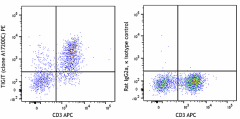
-

ConA-stimulated (3 days) C57BL/6 mouse splenocytes were stained with PE anti-mouse TIGIT (Vstm3) (clone A17200C) (left) or PE Rat IgG2a, κ isotype control (right) and APC CD3.
| Cat # | Size | Price | Quantity Check Availability | Save | ||
|---|---|---|---|---|---|---|
| 622205 | 25 µg | $141 | ||||
| 622206 | 100 µg | $347 | ||||
TIGIT (T cell immunoreceptor with Ig and ITIM domains precursor) contains an immunoglobulin variable domain, a transmembrane domain and an immunoreceptor tyrosine-based inhibitory motif. TIGIT is an inhibitory receptor expressed on the surface of natural killer (NK) cells. TIGIT recognizes nectin and nectin-like adhesion molecules and thus plays a critical role in the innate immune response to malignant transformation. TIGIT in conjunction with CD226 forms a pathway that has prominent similarities to the costimulatory CD28/CTLA-4 pathway. CD226 and TIGIT bind the same set of ligands (CD155 and CD112) and CD226 is a positive regulator of T cell responses, while TIGIT inhibits them. Knockdown of TIGIT expression in human CD4+ T cells results in an increase of both T-bet and IFN-γ mRNA and protein expression. These effects are overcome by blocking CD226 signaling indicating that TIGIT exerts immunosuppressive effects by competing with CD226 for the same ligand, CD155. The binding of CD155 to TIGIT on human dendritic cells enhances the production of interleukin 10 and diminishes the production of interleukin 12p40. TIGIT shows an inhibitory effect on cell-signaling pathway in murine models of experimental autoimmune encephalomyelitis (EAE). Loss of TIGIT expression in mice results in hyperproliferative T cell responses and increased susceptibility to EAE.
Product DetailsProduct Details
- Verified Reactivity
- Mouse
- Antibody Type
- Monoclonal
- Host Species
- Rat
- Immunogen
- Mouse TIGIT Recombinant Protein
- Formulation
- Phosphate-buffered solution, pH 7.2, containing 0.09% sodium azide
- Preparation
- The antibody was purified by affinity chromatography and conjugated with PE under optimal conditions.
- Concentration
- 0.2 mg/mL
- Storage & Handling
- The antibody solution should be stored undiluted between 2°C and 8°C, and protected from prolonged exposure to light. Do not freeze.
- Application
-
FC - Quality tested
- Recommended Usage
-
Each lot of this antibody is quality control tested by immunofluorescent staining with flow cytometric analysis. For flow cytometric staining, the suggested use of this reagent is ≤ 0.5 µg per million cells in 100 µL volume. It is recommended that the reagent be titrated for optimal performance for each application.
- Excitation Laser
-
Blue Laser (488 nm)
Green Laser (532 nm)/Yellow-Green Laser (561 nm)
- RRID
-
AB_2832837 (BioLegend Cat. No. 622205)
AB_2832838 (BioLegend Cat. No. 622206)
Antigen Details
- Structure
- Homodimer
- Distribution
-
Human follicular B helper T cells (TFH), regulatory, memory and activated T cells, NK cells.
- Function
- Immunosuppressive effects by binding CD155 and modulating cytokine production by DC. Inhibits NK cell cytotoxicity. Inhibits T cell functions by competing with CD226. Tregs TIGIT+ cells suppress proinflammatory Th1 and Th17 cells, but not Th2 cell responses.
- Interaction
- Dendritic cells, monocytes
- Ligand/Receptor
- Poliovirus receptor (PVR/CD155) and nectin-2 (PRR-2/CD112)
- Cell Type
- NK cells, T cells
- Biology Area
- Cell Adhesion, Cell Biology, Immunology, Signal Transduction
- Molecular Family
- Adhesion Molecules, Immune Checkpoint Receptors, Soluble Receptors
- Antigen References
-
- Yu X, et al. 2009. Nat. Immunol. 10:48.
- Stanietsky N, et al. 2009. Proc. Natl. Acad. Sci. U S A. 106:17858.
- Joller N, et al. 2011. J. Immunol. 186:1338.
- Tahara-Hanaoka S, et al. 2004. Int. Immunol. 16:533.
- Lozano E, et al. 2012. J. Immunol. 188:3869.
- Joller N, et al. 2014. Immunity. 40:569.
- Deuss FA, et al. 2017. J. Biol. Chem. 292:11413.
- Gene ID
- 100043314 View all products for this Gene ID
- UniProt
- View information about TIGIT on UniProt.org
Related FAQs
- What type of PE do you use in your conjugates?
- We use R-PE in our conjugates.
Other Formats
View All TIGIT Reagents Request Custom Conjugation| Description | Clone | Applications |
|---|---|---|
| Ultra-LEAF™ Purified anti-mouse TIGIT (Vstm3) | A17200C | Block |
| PE anti-mouse TIGIT (Vstm3) | A17200C | FC |
Customers Also Purchased
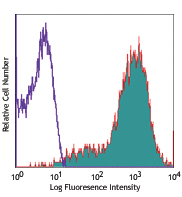
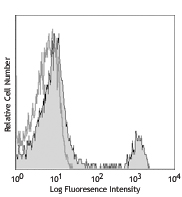
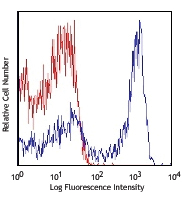
Compare Data Across All Formats
This data display is provided for general comparisons between formats.
Your actual data may vary due to variations in samples, target cells, instruments and their settings, staining conditions, and other factors.
If you need assistance with selecting the best format contact our expert technical support team.
-
Ultra-LEAF™ Purified anti-mouse TIGIT (Vstm3)

Recombinant biotinylated mouse TIGIT (Black Circles) binds t... -
PE anti-mouse TIGIT (Vstm3)

ConA-stimulated (3 days) C57BL/6 mouse splenocytes were stai...
 Login/Register
Login/Register 









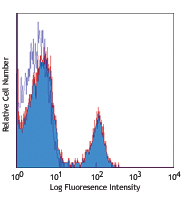



Follow Us